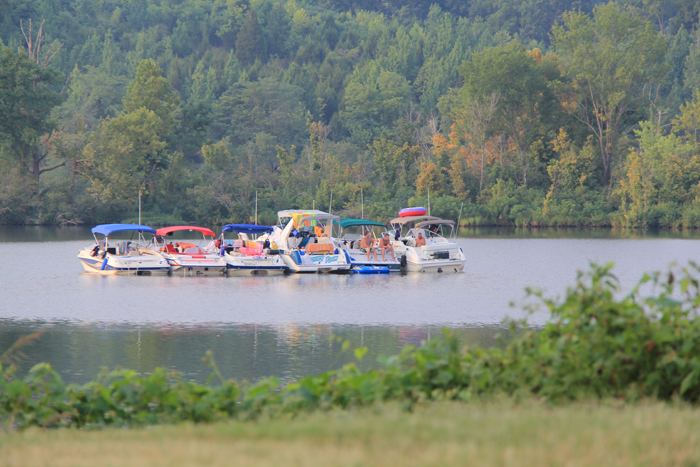 The History of Cheatham Lake
The History of Cheatham Lake
Congress authorized the Cheatham Lock and Dam Project in 1946 as a navigation unit of a comprehensive plan of development for the Cumberland River Basin. The original purpose of this water resources development project was to replace three smaller, aging locks built at the turn of the century: Lock A at Cumberland River Mile 150.6, Lock 1 at Mile 188.4, and Lock 2 at Mile 201.0. The ideal construction site was about 9 miles downstream of Ashland City at River Mile 148.7, just 42 miles below Nashville. In 1952, Congress added authorization for the production of hydroelectric power as a project function.The lock, dam, and power plant were designed by the U.S. Army Corps of Engineers and built by private contractors under Corps supervision. Construction started in April 1950, and the lock was opened to navigation in December 1952. The project became fully operational with the completion of the third generating unit in the power plant in November 1960. Corps personnel operate the lock, dam, and power plant and manage the public lands and waters of the lake.At Normal Pool Elevation 385 (feet above mean sea level), Cheatham Lake covers 7,450 acres and has 320 miles of shoreline. The backwaters of the lake reach Old Hickory Dam, 67.5 miles upstream. The lake is a “run-of-the-river” type that operates basically on normal streamflow. The Corps uses as much of the inflow as practicable for hydropower generation. The dam was not constructed to provide a designated capacity for regulating floodwaters. Therefore, during periods of heavy rainfall and high streamflow, the spillway gates are opened to pass waters in excess of the capacity of hydropower turbines.
How the Cheatham Project got its Name
The origin of the name for Cheatham Lock and Dam involves several interesting accounts. The Tennessee Blue Book states that Cheatham County, established in 1856, was named for Edwin S. Cheatham, Speaker of the Tennessee Senate from 1855 to 1861. However, noted history holds that Cheatham County was named for the man who settled it, J.R. Cheatham. Yet another theory passed along since the project was completed is that it was named after Confederate General Benjamin F. Cheatham. Perhaps the best and most logical idea is that the dam and the lake it forms were named after Cheatham County because of location. As for the three illustrious Cheathams - settler, politician or war hero - you may take your choice.